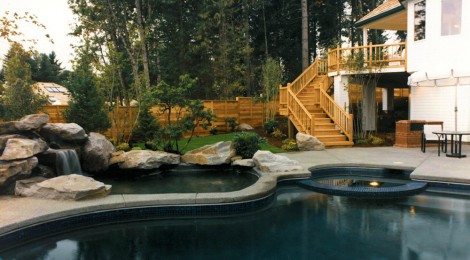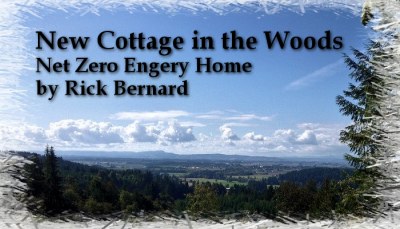
Q & A: What Should I Know About Buying Land
Reprinted with permission from the Oregonian Homes and Rental special section from the Ask the Expert column featuring Rick Bernard of Bernard Custom Construction, February 1, 2004.
Question: I’m thinking about buying a lot to build a home on. What’s the first thing I should do?
The first thing to do is to contact a professional real estate agent specializing in raw land – or a hands-on builder – and get valuable free advice concerning the costs of building a home on different types of lots.
Question: What should I consider about the lot’s physical characteristics?
The lot’s characteristics can have a dramatic and direct effect on the cost of construction. If the lot is on a steep (45-degree) slope, which is common in new construction these days, you will need engineered footings to prevent downhill movement. A concrete foundation may cost an exorbitant amount in such a case, but sometimes it’s worth the additional cost.
The site’s soil stability should always be investigated by an engineer to discover whether flat areas drain properly and whether steep areas have a tendency to slide.
If you’re buying the property because of its view, consider whether the view will remain a permanent feature. View corridors, unless designated and recorded legally, can be affected by trees that grow to block the view or can be adversely affected when attractive trees die or are removed from adjacent land over which you don’t have control.
Sites with a lot of trees can sometimes be problematic, as many jurisdictions do not allow owners and their contractors to remove trees without written permission and compensation by replanting trees.
Question: How can I determine whether a house plan I like will work on the property?
Do not purchase the house plans before you find your ideal piece of ground. The plans are the most flexible part of the project.
Also, be open to unrealized potential, such as turning a site with poor drainage into a wetland habitat. There are some wonderful solutions to site problems that can turn lemons into lemonade – if you receive good advice from a professional.
Question: What are the chances of finding a large, flat view lot at the end of a cul-de-sac?
They are pretty good if you are willing to break the ice in a new subdivision. You get to set the tone for the area, and the developer is willing to make some adjustments to get the ball rolling, if they can see the benefit received from your home being the first in a new area.
Question: What are the pros and cons of buying a raw piece of land unconnected with a larger development?
You can do your own things, depending only upon the local building codes. You would not have to comply with restrictive covenants, conditions, or restrictions.
However give yourself the insurance of some space around your home to protect your views and privacy, or in case some obnoxious neighbors move in next door.
question: What are the pros and cons of buying a lot in a platted development?
All the support systems – fire hydrants, water, septic system, storm water systems and minimal landscaping are provided by the developer. Though that’s a plus, some developments require uniformity and restrictions that some buyers find too confining.
Question: At what point should the architect, engineer or builder be contacted?
Generally architects or engineers charge fees for consultation in the formative stages of a project.
If you are committed to building a new home, employ them for their expertise.
If, however, you’re simply dreaming about a home and its associated costs or have a limited budget, use a builder or real estate agent on the front end to simply explore the idea.
Rick Bernard is president of Portland-based Bernard Custom Construction. He has been in the construction business for 28 years, has build 19 Street of Dreams homes, and is a Certified Master Home Builder.

